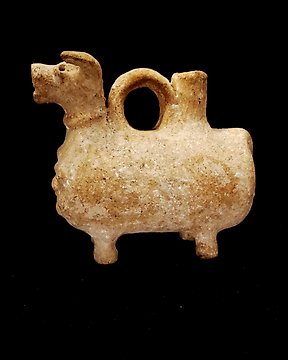
Phönizisch - Zoomorpher Rhyton - Stier - 3./2. Jahrtausend v. Chr
Nr. 83553101

Nr. 83553101

8 reales. Charles III of Spain. 1783. México. FF. AR 21 g. and 38,6 mm. From the 1784 wreck of The Cazador.
On January 11, 1784, El Cazador (The Hunter), a Spanish Brig of War, set sail from Veracruz, Mexico for the port of New Orleans with its load of silver coins. The ship never arrived. The loss of those coins triggered the rapid expansion of the newly formed U.S.A. At the time, Spain owned nearly a million square miles of North America known today as the Louisiana Territory, the key shipping access for which was the port of New Orleans. To bolster the Territory's fledgling economy, King Charles (Carolus) III of Spain ordered the near-worthless paper currency circulating there to be redeemed with silver coinage from the Mexican Mint- the first Spanish mint in the New World. El Cazador carried those ill-fated coins. We will never know what peril caused her demise.
The first divers to reach the weck site of El Cazador found it littered with artifacts and silver coins. Many of the coins were welded together by centuries of corrosion into small "clumps" of coins. Most of those original clumps were separated into individual coins.
In most cases, the coins' design details were affected by corrosion. When a near perfect specimen of these so-called "Bust" type coins is occassionally found, the obverse shows a portrait of King Carolus III of Spain (1759-1788) and the words "DEI GRATIA". Below the portrait is the coin's year of mintage. The majority of dated coins recovered are from 1783. The reverse reads "HISPAN. ET. IND. REX", followed by the mint mark, the denomination ("8R": 8 reales) and the assayer's initials at the time of minting. The central coat-of-arms displays the crowned shield of Castile and Leon. The shield shows three crosses at its center, signifying the Holy Trinity, and a pomergranate in tribute to the Spanish city of Granada. To either side of the coat-of-arms stand the Pillars of Hercules with the motto "PLUS VLTRA" on the surrounding ribbons.
Provenance: From the 1784 wreck of The Cazador, discovered in 1993. Bought to Arqueonautas Worldwide (U.S.A.).
The Supplier warrants that he obtained this lot legally. Important information. The seller guarantees that he is entitled to ship this lot. The seller will take care that any necessary permits will be arranged. The seller will inform the buyer about this if this takes more than a few days.
Important: For destinations out of Spanish territory: all our objects will be shipped after obtaining CERTIFICATE OF EXPORTATION by Ministry of Culture of Spain. We inform our clients that it may take between 4-8 weeks.
So kaufen Sie auf Catawiki
1. Etwas Besonderes entdecken
2. Höchstgebot abgeben
3. Sichere Zahlung durchführen